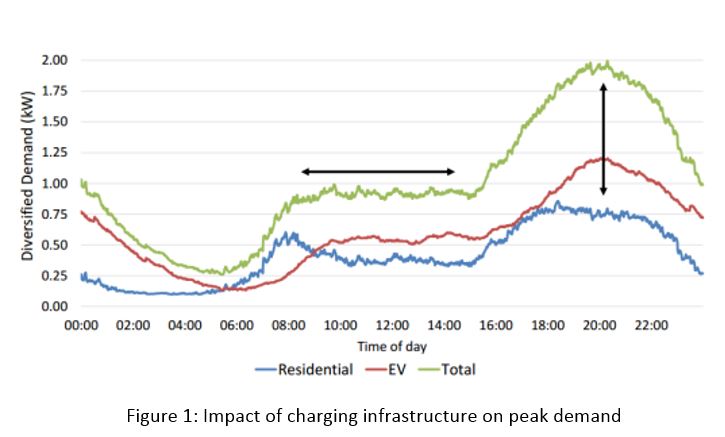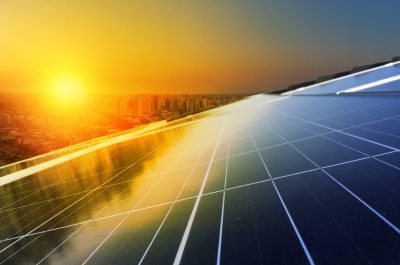Jump-start or false start for electric vehicles?
A successful road trip needs a reliable driver, front seat passenger with navigation skills and back seat passengers for support. The Australian electric vehicles (EV) industry, much like any successful road trip, now needs the key elements of a driver (policy direction), passenger (affordability) and backseat support (research and development, model availability, recharging infrastructure, policy reform) to get us on our way.
A Senate Select Committee was established in June last year to inquire into the use and manufacture of EVs in Australia and its report was published last week, providing a range of recommendations. The jury is still out as to whether these are significant enough to deliver the impetus needed, but it is at least a start.
Energy Networks Australia’s submission to the inquiry made a range of recommendations for policy changes required to support the uptake of EVs in Australia. These included ‘time-of-use’ electricity billing, a technology neutral approach by allowing competition battery and hydrogen fuel cell EVs, development of a nationally consistent guideline for connection of fast charging electric and hydrogen refuelling infrastructure and implementation of monitoring systems for energy networks to allow visibility of EV connection points and recharging stations.
The report recommendations go some way towards these objectives and Energy Networks Australia is keen to see the following implemented:
Recommendation 1:
Develop a national EV strategy to facilitate and accelerate EV uptake and ensure Australia takes advantage of the opportunities, and manages the risks and challenges of the transition to EVs.
A national strategy should ensure there are effective regulations for charging infrastructure and electricity grid integration. This aligns with Energy Networks Australia and CSIRO’s Electricity Network Transformation Roadmap projection for efficient capacity utilisation which will be achieved through adoption of EVs with managed charging [1].
Recommendation 13:
Work closely with electricity market agencies, states and other relevant stakeholders to prepare a 10- year plan detailing priority electricity network infrastructure upgrade needed to manage EV demands.
A 10- year plan would provide confidence to networks that required network infrastructure upgrades will be properly planned and managed to meet EV demands. It should ensure networks have visibility of where and how EV charging equipment is connected to the system, to better understand the increased demand, as well as ensure the network is reliable and fit for purpose.
Recommendation 14:
Work closely with the Australian Energy Market Operator (AEMO) to expedite the establishment of the distributed energy resources (DER) register, and develop a strategy for AEMO to access and direct DER to charge or provide electricity to the grid to meet operational requirements.
The DER register is a key functionality of the joint Energy Networks Australia and Australian Energy Market Operator’s Open Energy Networks (OpEN) project [2], which seeks to integrate DER into the electricity networks in ways that ensure quality and reliability of supply and lower household bills. The successful and timely implementation of the DER register will provide visibility to networks on where EVs, as well as other DER resources are connected, to help in planning and operating the power system as it transforms.
Recommendation 17:
Work closely with Standards Australia to establish a series of national standards in relation to EVs.
Energy Networks Australia is working on upgrading DER connections guidelines to standardise the connection of DER into the grid [3]. The development of national standards on how to connect-charging EV infrastructure, with work already underway for the DER connection guidelines, will be beneficial for Standards Australia as well as the networks.
Tariff Reform
The Committee acknowledged that it is important that EVs do not overload the electricity networks at times of peak demand in order to ensure grid stability is maintained and price spikes are prevented. Energy Networks Australia believes that this can be achieved through time-of-use electricity pricing.
The true cost of producing and delivering electricity is not only influenced by how much the customer uses, but also depends on what time of the day it is used. Figure 1 shows usage from a UK trial of EVs. The green line, which is the addition of the blue (residential) and the red (EV) line, doubled the diversified demand at about 8pm due to EV load. This doubling of demand will have significant implications on the design and management of the grid and if not managed well, major investment in infrastructure will be required to meet this peak demand. Major infrastructure investments add costs to customer power bills – an outcome nobody wants.

As a solution, time-of-day pricing is a form of demand pricing to encourage people to charge their EV at off-peak times to maximise network use, rather than adding to use at peak times and requiring more network to be built. As it currently sits, under that flat pricing, there is no incentive for an EV owner to do anything other than come home and plug in their EV, which will make the peaks worse. However, if we can move to changing the pricing on different times of the day, lining up with network peaks, when there is significant generation in the system, we can link that into smart-charging devices and in turn flatten electricity peak demand. Hence, time-of-use tariffs are crucial for orchestrating EV charging.
Hydrogen Fuel Cell Vehicles
The Committee argued that hydrogen fuel cell EV development progress is slow compared with battery and plug-in EVs and that there is also lack of refuelling infrastructure to support its uptake. However, as a means to balance the grid, the role of hydrogen production is vital. A systems approach linking electricity, gas and hydrogen fuels would deliver the best outcome for customers. With the hydrogen economy developing in Australia, there is potential of having hydrogen distribution and refuelling stations, supporting an increase in the uptake of hydrogen fuel cell EVs.
There is opportunity to not only optimise battery and plug-in EVs, but also hydrogen fuel cell EVs, which could help flatten out demand on the electricity system. With smarter technology, we can ensure that EVs are charging at the right times, i.e. when we actually have an excess of supply. This could also reduce the cost of electricity for customers, stabilise the grid and improve the reliability of power supplies.
Energy Networks Australia’s role towards an EV future
Under Energy Networks Australia’s Australian Strategic Technology Program [4], networks identified EV charging and grid scale storage as one of the four key innovation themes needing research and development – a project we will be undertaking. Energy Networks Australia is also hosting a Future Grid Seminar “Great Expectations: The Interactive Grid” [5] in March 2019, where EVs and network readiness to accommodate them will be explored by a range of expert speakers.
The Senate Committee recommendations are just the beginning of the policy changes needed to jump-start the Australian EV road trip. For the journey to be successful, meaningful reforms must be undertaken and key backseat passengers such as time-of-use type electricity billing and hydrogen fuel cell EV are needed to ensure the ride into the EV future is a smooth and rewarding one.
The full report can be accessed here.
The full list of recommendations can be accessed here.
References
[1] Electricity Network Transformation Roadmap – Final Report https://www.energynetworks.com.au/assets/uploads/entr_final_report_april_2017.pdf
[2] Open Energy Networks – Consultation Response https://www.energynetworks.com.au/assets/uploads/open_energy_networks_response_paper_0.pdf
[3] DER Connection Guidelines https://www.energynetworks.com.au/resources/guidelines-instruction-manuals/distributed-energy-resources-national-connection-guidelines/
[4] Australian Strategic Technology Program https://www.energynetworks.com.au/australian-strategic-technology-program/
[5] Future Grids Seminar 2019 https://www.energynetworks.com.au/events


